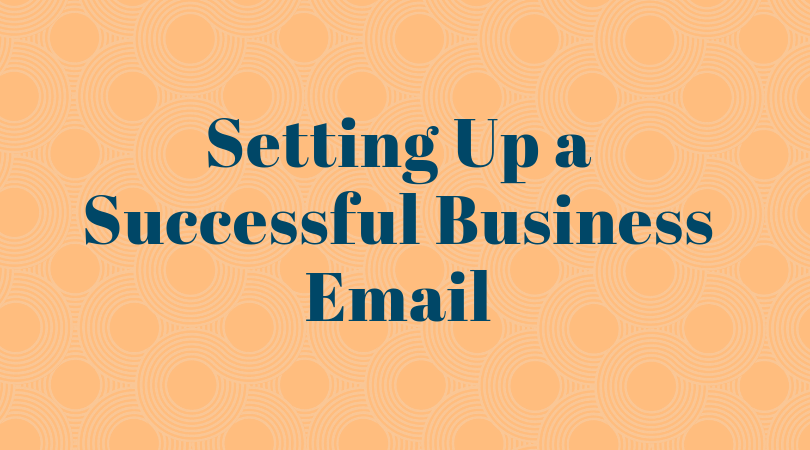Setting Up a Successful Business Email

When it comes to setting up

First things first, though. To even start thinking about such things, you will need a domain.
Registering a Domain
The fastest and easiest way to register a domain name is via an internet domain registrar (if you already have a hosting) or via a web hosting business (if you are still to purchase a hosting package). Internet domain registrars are many, so a simple search to compare prices should do the trick. Web hosting companies may be local or international and, again, comparing packages and prices should do the trick.
Each domain coupled with web hosting comes with a predefined number of email addresses.
Choosing an Email Service
Most web hosting companies’ offers include the option to forward incoming emails to common email providers, such as are Gmail or Outlook. Another option is to purchase an email service solely for business purposes (e.g., Google Apps for Business or Microsoft Office 365). The biggest difference between the free and the paid services is in bigger storage and additional services.

Choosing an Email Service Provider
Take your time for this step, as you will ideally wish to choose a service only once and stick to it. To pick the best option, take the following factors into account:
1. How many email addresses does your business already have in its database?
2. Do you use dynamic content, personalization and transactional emails?
3. What type of segmentation do you use?
4. What is your company’s projected growth?
Once you have the answers to all these questions, compare email service providers. The things you need to look into are:
- Authentication and deliverability
This ensures all emails reach your clients’ inboxes and are not blocked by spam filters or ISPs.
- Email automation
It is essential to use email automation for marketing on a large scale. Therefore, this factor is essential. Pay attention to the ease of creation of welcome emails, dynamic content and shopping carts.
- Usability
More important than a good platform is support. Always think in terms of something going wrong — you will wish to solve the issue ASAP. In addition, the platform should make it easy to create emails and templates.
- Reporting
Reporting tools are crucial for monitoring the effectiveness of marketing campaigns. Therefore, they should be easy to use and easy to understand. Some things to keep in mind are: the format of data exports, the ability to export data for offline analysis, the ability of multi-campaign analysis and the ability to integrate reports with website analytics.
- List management
The ability to segment lists will help you keep track of multiple marketing campaigns. Make sure that your email service provider offers at least most important segmentation criteria (i.e., behavioral and demographic data).
- Integration with mobile/social media channels
Always keep in mind that the great majority of emails are being accessed through mobile phones. Therefore, a good email service should allow for a suitable social media presence. Simply put, look up the social media platforms integrated with the email service (commonly: Facebook, LinkedIn, Pinterest, Twitter and YouTube).
Tip: Check your host’s uptime — you will want your emails to be delivered instantly.
Connecting the Dots
Connecting your business domain with an email service comes next. As mentioned above, a hosting/domain package comes with a number of mailbox addresses and is often coupled with multiple email services.
Most common ones are: webmail, mail forwarding, connectivity with email clients, and hosted services.
- Webmail stores emails on the registrar-operated servers. Messages are accessed through a web browser.
- Mail forwarding forwards emails to your personal email address. That means that all replies that you send will come from your personal email address.
- Connectivity with email clients is offered for people already using a desktop email client application (i.e., Microsoft Outlook). Emails received in this way are downloaded to your company’s computers/servers. Many of the email clients offer additional benefits, such as, for example, calendar integration. However, if you run multiple mailboxes, the setup process may be tricky and is best left to professionals.
- Hosted services are numerous, with the most common ones including Google Apps for Work and Amazon’s Workmail. Strictly speaking, these are similar to webmail in that they store emails on the servers of the provider. Hosted services are not free of charge, but are not expensive, either. They also offer additional benefits.
Tip: If you run a medium to large business, setting up multiple inboxes may be a good idea, since these allow for assigning multiple email addresses.




